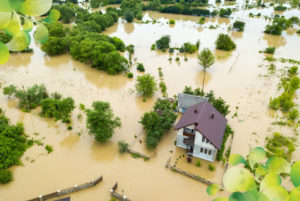
What Does Flood Insurance Cover?
You may or may not be aware, but your standard home insurance policy does not typically cover flood damage. It usually is a separate policy that is specifically designed to protect your property and your personal belongings if damaged or destroyed in a flood.
If you have a home that is in a flood zone or are considering purchasing a property in a flood zone, then you will want to learn more about flood insurance and how it can provide you with peace of mind. Keep scrolling to learn more about the basics of flood insurance.
Who Can Buy Flood Insurance?
Generally, flood insurance is available to people in communities that participate in the National Flood Insurance Program (NFIP). Flood insurance policies can be purchased then by homeowners, business owners and even renters who want protection for their properties, buildings and belongings.
Do I Really Need Flood Insurance?
You may be required to purchase flood insurance depending on your circumstances. If you own a home on land that is at high risk for flooding, your mortgage lender may require you to purchase flood insurance. However, flood insurance isn’t just for homes in high-risk locations. FEMA (Federal Emergency Management Agency) says that all 50 states have experienced floods at one time or another, and that more than 20% of the claims it handles come from moderate to low-risk regions. So even if you think it’s not necessary, you may want to think again. With the weather becoming increasingly unpredictable, it may be wise to invest in flood insurance policy even if you’re located in a low-risk area.
What Does Flood Insurance Cover
You may be wondering what a flood insurance policy actually protects? FEMA says you can buy coverage to protect your personal belongings, your home or both. Below we describe what is covered in each:
Property Coverage
- Covers the physical structure of your home and the foundation, plumbing and electrical systems, central air and heating, cabinets and panelling, attached bookcases and a detached garage. Please note, other detached structures will need their own policy.
- Is typically paid out through replacement cost basis for a primary residence, and actual cash value for a vacation home.
- The maximum coverage limit is $250,000.
Personal Belongings Coverage
- Protects your clothing, electronics, furniture, curtains, freezers and foods within them, some portable appliances and certain valuables like art (up to a specified limit).
- It typically pays out an actual cash value basis but takes depreciation into account.
- The maximum coverage limit is $100,000.
What’s Not Covered by Flood Insurance?
There are a few things that will not be covered by flood insurance however. See below a few examples of the type of property and expenses that won’t be inside the scope of most basic flood insurance:
- Currency, precious metals and paper valuables like stock certificates.
- Outdoor property such as decks, fences, landscaping, patios, wells and septic systems, and hot tubs and pools.
- Moisture or mold/mildew damage that ‘could have been avoided by the homeowner’.
- Living expenses like temporary housing if flood damage makes your home uninhabitable.
- Cars and other self-propelled vehicles. Your auto insurance may offer some protection for your car if you have comprehensive coverage.
If you are looking to upgrade your home or property insurance with a flood insurance policy, it’s best to contact the professionals. The team at Dunham Insurance Group is an independent agency offering the best insurance policies throughout the country. Contact them today to get a tailored quote that perfectly suits your needs.
Give us a call!
- 954-564-7772
